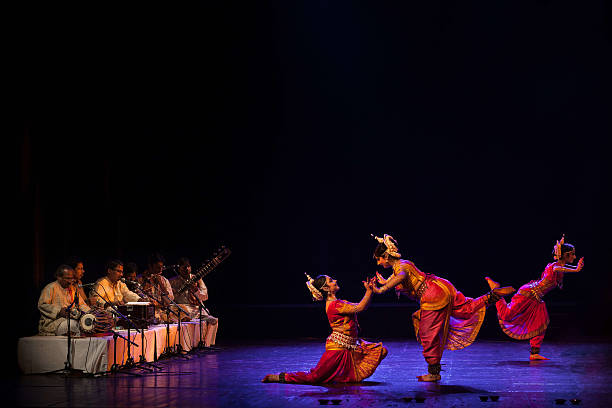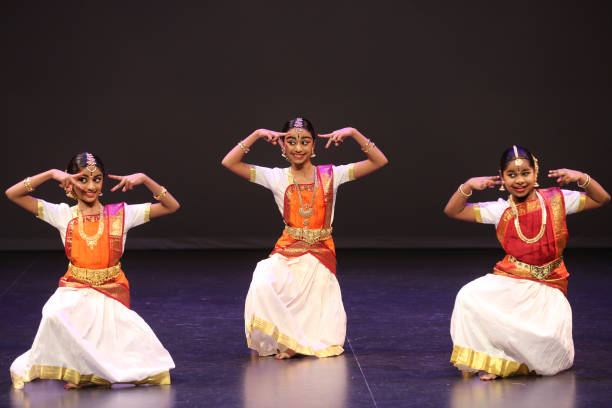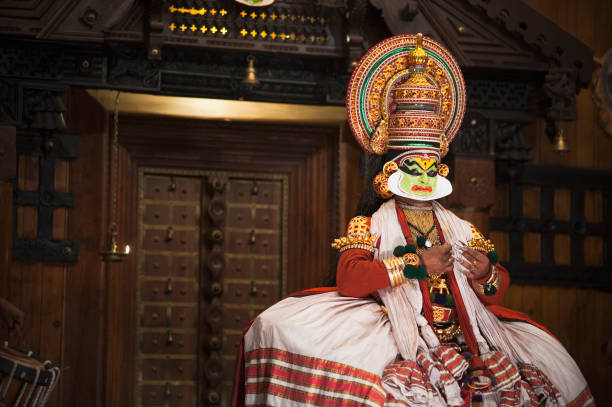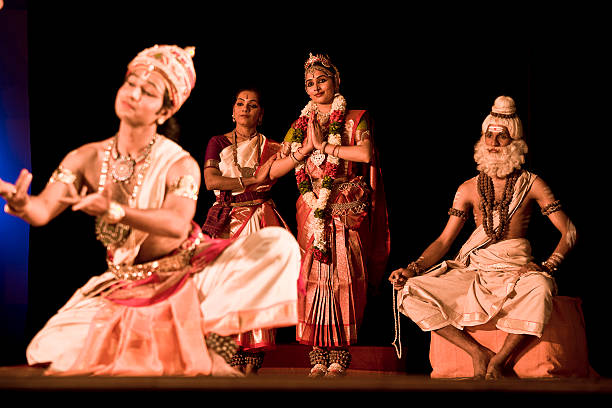
“Naṭya Shastra” is a Sanskrit text or thesis based on performing arts. This text is credited to sage Bharata Muni.
The first complete compilation of “Naṭya Shastra” is dated between 200 BCE and 200 CE, but evaluations suggest that they vary between 500 BCE and 500 CE.
The “Naṭya Shastra” text consists of 36 chapters with a collective total of 6000 poetic verses. All these chapters and verses describe the performance arts.

The subjects in the “Natya Shastra” text are:
• Dramatic Composition
• Structure of a play
• Construction of a stage
• Genres of acting
• Body movements
• Makeup
• Costumes
• Role and Goals of an art director
• Musical scales
• Musical instruments
• Amalgamation of music with art performance.

The “Naṭya Shastra” is notable as an ancient encyclopaedia or thesis on Arts.
This text has played a major role in influencing Dance, Music and Literary traditions in India.
“Naṭya Shastra” is famous for its description of the artistic “Rasa” theory.
“Rasa” highlights the entertainment that is the desired effect of performance arts. But, entertainment itself is not the primary goal of Indian dance forms.
The main goal of the Indian dance forms is to transport each individual in the audience into another parallel reality, which is full of wonder.

In this parallel reality, the individual (audience) experiences the core of his consciousness, which will help him understand his duty morally and spiritually.
“Naṭya Shastra” has even inspired secondary literature such as the Abhinavabharati.
Abhinavabharati was written in the 10th century, by Abhinavagupta. It is a classic Sanskrit Bhasya, which consists of reviews and commentaries.
The classic text of dance and performance arts that has survived is the text “Natya Shastra”, credited to sage Bharata.
It is systematically stated in Natya Shastra, how Brahma created Natya-Veda. He created the Natya – Veda by taking :
“Word” from the Rigveda
“Melody” from the Samaveda
“Mime ” from the Yajurveda
and “Emotion” from the Atharvaveda.

The Indian Classical Dances are deeply rooted in “Natya Shastra”.
India has several classical Indian dance forms.
Each of these Indian classical dance forms can be linked to different parts of the country.
Classical and folk dance forms also developed from Indian traditions, epics and mythology.
Refer to my blog on – The 8 Classical Dance Forms Of India.
Discover more from Dreamz&Experiences
Subscribe to get the latest posts to your email.
